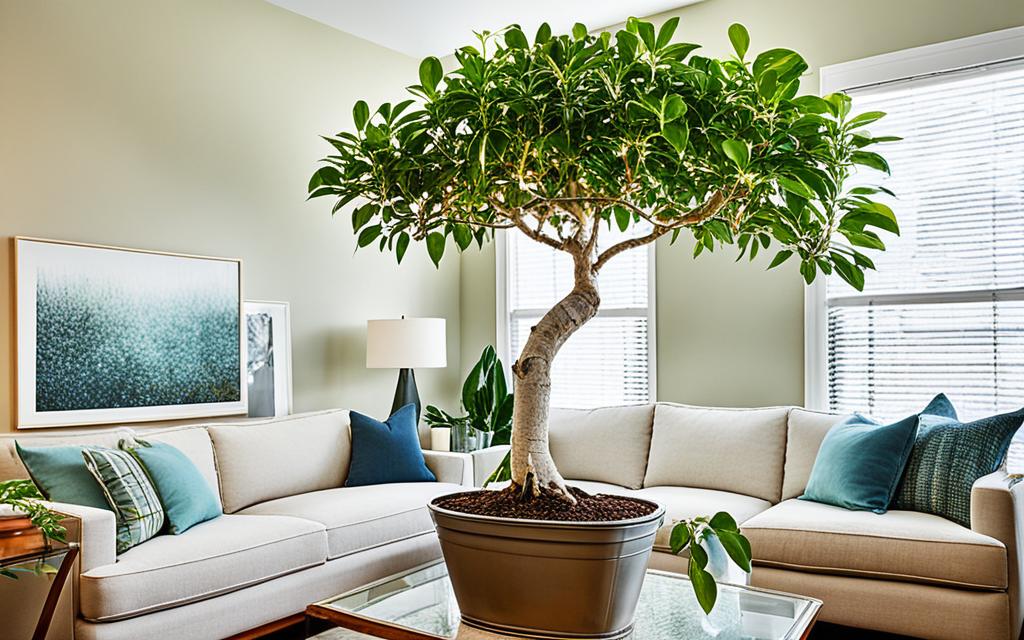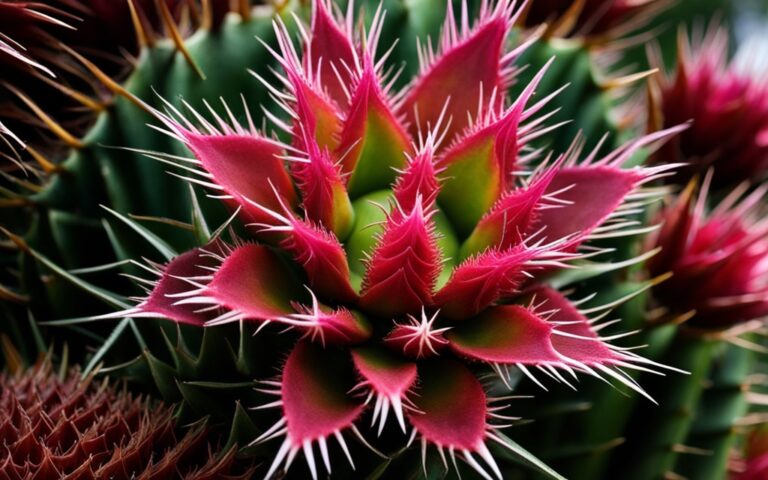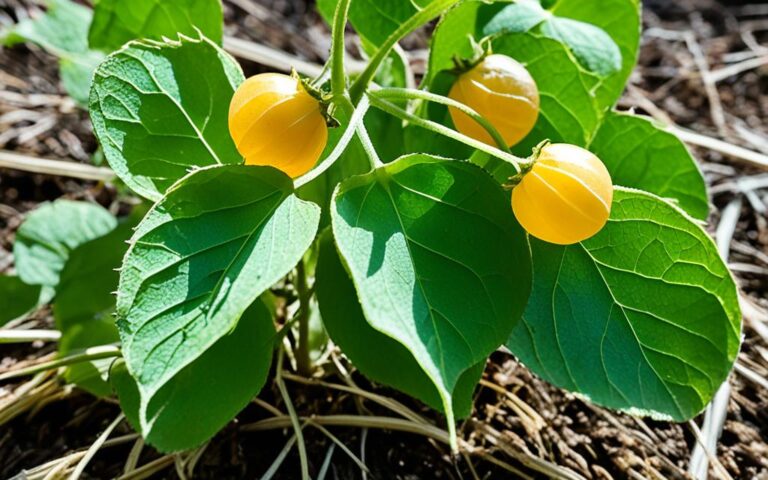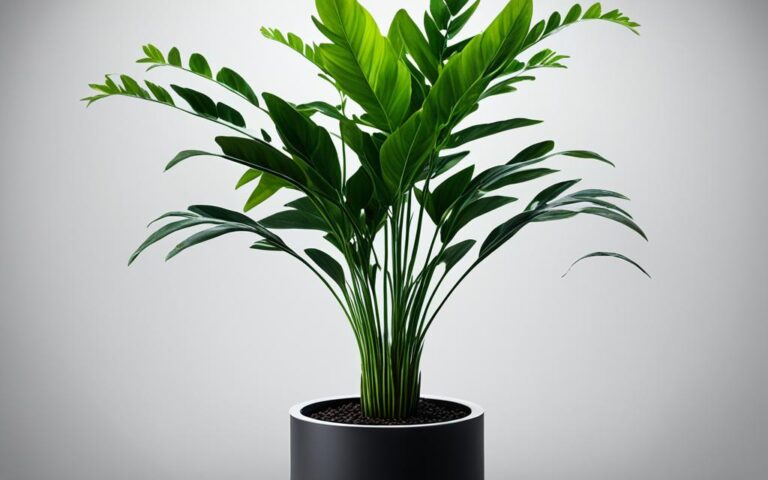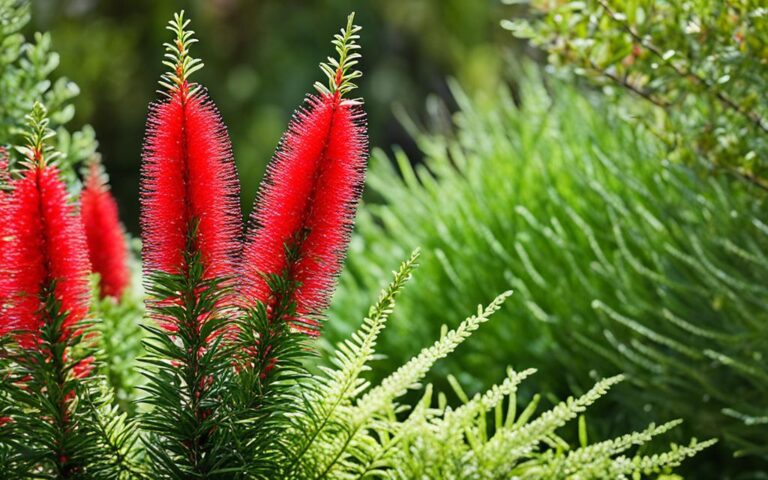Ficus Plant: Care Tips for a Thriving Indoor Tree
Did you know the Ficus family has about 900 species? It’s a big group of plants you can grow indoors. These trees and shrubs are known for their beautiful leaves. They are also top plants for cleaning the air we breathe.
By following simple care tips, you can keep a Ficus plant happy and healthy at home.
Key Takeaways
- Ficus plants offer a wide range of species and varieties for indoor gardening
- Proper temperature, humidity, and lighting conditions are crucial for Ficus plant health
- Careful watering, fertilizing, and repotting schedules help Ficus plants thrive
- Pruning and training techniques can shape the growth of Ficus plants
- Ficus plants are known for their air-purifying abilities and can enhance indoor spaces
Introduction to Ficus Plants
Ficus plants, also called indoor trees, are loved by many. They come from a group of about 900 species. These plants include the Fiddle Leaf Fig, Rubber Plant, and Weeping Fig. Each has its own look and care needs.
Popularity and Interesting Facts
Ficus plants are popular for their beauty and easy care. They have shiny green leaves and strong branches. This makes them a great choice for any room. The way they pollinate is also interesting, using special wasps.
Common Species and Varieties
There are many ficus species good for indoor plants. Some top picks include:
- Fiddle Leaf Fig (Ficus Lyrata): Comes from Western Africa’s rainforests.
- Ficus Audrey (Ficus Benghalensis): Grows big from India.
- Rubber Tree (Ficus Elastica): Known for its wide, green leaves with red veins, from India.
- Ficus Alii (Ficus Maclellandii): A newer type with green leaves, from Southeast Asia.
- Weeping Fig (Ficus Benjamina): A classic with small, shiny leaves, from Asia and Australia.
- Ficus Daniella (Ficus Moclame): Has thick, oval leaves, from Western Africa.
| Ficus Variety | Native Region | Key Characteristics |
|---|---|---|
| Fiddle Leaf Fig (Ficus Lyrata) | Western Africa | Large, fiddle-shaped leaves |
| Ficus Audrey (Ficus Benghalensis) | India | Massive growth potential |
| Rubber Tree (Ficus Elastica) | India | Wide, dark green leaves with maroon veins |
| Ficus Alii (Ficus Maclellandii) | Southeast Asia | Clustered olive green leaves |
| Weeping Fig (Ficus Benjamina) | Asia and Australia | Small, tapered shiny emerald leaves |
| Ficus Daniella (Ficus Moclame) | Western Africa | Thick, waxy oval-shaped leaves |
Anatomy and Features of Ficus Plants
Ficus plants, also known as fig trees, are known for their unique features. They have glossy, green leaves and strong, woody stems. These leaves vary in size, shape, and color, including green, burgundy, and variegated.
The stems of Ficus plants are strong, supporting the plant’s growth. Ficus species can be trees, shrubs, or climbers. They can be monoecious or (gyno)dioecious. The small, leaf-like structures called stipules wrap around the stem, leaving scars.
Special Features and Growth Habits
Ficus plants are loved for their foliage but rarely bloom or produce fruit indoors. Their syconia, or figs, have both male and female flowers inside. The shape and size of the receptacle, which holds the flowers, vary among species.
The Ficus benjamina, or weeping fig, is a tree from Asia and Australia. It can grow up to 30 meters tall. Its leaves are oval-shaped, 6-13 cm long, with pointed tips. The leaf stalk is 1 to 2.5 cm long, and the inflorescences are shiny green, about 1.5 cm wide.
Ideal Growing Conditions for Ficus Plants
Ficus plants, also known as fig trees, are popular for indoor spaces. They need specific conditions to grow well. Keeping these conditions right is key for your ficus plant’s health and looks.
Light Requirements
Ficus plants like bright, indirect light. They can handle some direct sunlight but too much can burn their leaves. It’s best to place your ficus near a sunny window for plenty of filtered light.
Temperature and Humidity Preferences
These plants do well in temperatures between 70°F and 85°F during the day. At night, they like it to be between 60°F and 70°F. They also need a humid environment with humidity between 40% and 60%. If your home is dry, using a pebble tray or humidifier can help.
Soil Requirements and Watering Needs
Ficus plants prefer well-draining, rich potting soil with a pH of 6.0 to 6.5. Water them when the top half of the soil feels dry. Don’t overwater, as this can cause root rot.
| Ficus Plant Characteristic | Ideal Growing Condition |
|---|---|
| Light Requirements | Bright, indirect light |
| Temperature Range | 70°F to 85°F (day), 60°F to 70°F (night) |
| Humidity Level | 40% to 60% relative humidity |
| Soil pH | 6.0 to 6.5 |
| Watering Frequency | Water when top half of soil is dry |
By giving your ficus the right light, temperature, humidity, soil, and water, you’ll help it stay healthy and grow well.
Proper Watering Techniques for Ficus Plants
Getting the watering right is key for Ficus plants to stay healthy and live long. These trees can suffer from too much or too little water. To keep your Ficus happy, wait until the top half of the soil is dry before watering again. Don’t let the plant sit in too much water, as this can cause root rot.
When you water your Ficus, use water that’s at room temperature. Make sure to empty any trays or saucers to prevent roots from sitting in water. Water your Ficus every 5 to 7 days or when the top inch of soil feels dry.
Ficus plants need more water in the spring and summer when the soil dries out quickly. Spraying the leaves with water can also help keep humidity levels up, which Ficus plants like.
“Watering Ficus plants with room temperature water lessens shock to the roots.”
While distilled water can help roots and leaves grow, it lacks nutrients for the soil. Rainwater, full of minerals, is a great choice instead of tap water for Ficus plants.
Proper watering is crucial for a healthy Ficus plant. By following these tips, you can make sure your tree gets the right amount of water. This way, you avoid the dangers of ficus plant overwatering or ficus plant underwatering.
Fertilizing and Repotting Ficus Plants
Proper fertilization and timely repotting are key for your ficus plant’s health and growth. With the right care, these trees can flourish and become beautiful parts of your home.
Fertilizer Types and Schedules
Ficus plants need regular fertilizing, especially when they’re growing. A balanced, water-soluble liquid fertilizer given monthly helps with healthy leaves and strong growth. Choose a fertilizer made just for ficus plant fertilizer to give your plant the best nutrients.
When and How to Repot
Ficus plants should be repotted every couple of years because they can outgrow their containers. The best time to repot is in the spring when the plant is growing well. Use a well-draining ficus plant potting soil and pick a pot that’s a bit bigger than the old one for more growth room.
- Gently remove the plant from its current pot, being careful not to damage the roots.
- Inspect the root system and trim any damaged or overgrown roots.
- Place the plant in the new, slightly larger pot and fill it with a high-quality, ficus plant repotting soil mix.
- Water the plant thoroughly after repotting to help it settle into its new home.
By following these steps for fertilizing and repotting, you can keep your ficus plant healthy, lively, and growing well for many years.
Pruning and Training Ficus Plants
Ficus plants are known for their toughness and are popular as indoor trees. They greatly benefit from regular pruning and training. Pruning is key for keeping their shape, controlling growth, and keeping the plant healthy. The best time to prune is during the growing season, in spring and summer, when they are doing well.
Techniques for Shaping and Controlling Growth
One important pruning technique is removing one-third of the plant’s canopy at a time. This helps shape the plant and encourages new growth. It lets you get the look and size you want. Ficus plants can handle pruning well, losing up to 30% of their growth without stress.
When pruning, it’s important to take out dead, damaged, or weak branches. Cutting just before a growth node can make the plant grow new branches and look better. Cutting at a slight angle away from the node helps the plant heal and prevents bad-looking stubs.
- Prune ficus plants in the dormant season, in the fall or winter, to reduce stress and encourage strong regrowth.
- Use sharp, clean pruning tools for clean cuts and to prevent disease or pests.
- Wear gloves and long sleeves when pruning, as the sap can irritate the skin.
- Avoid taking out more than one-third of the plant’s growth at once to prevent stress and leaf shedding.
By using these pruning techniques, you can keep your ficus plant healthy, well-shaped, and thriving. This makes your indoor space look more elegant and tropical.
“Pruning ficus trees is essential for overall health. It involves shaping the plant, removing damaged or diseased tissue, cutting weak branches, and promoting growth.”
Pests, Diseases, and Their Management
Ficus plants are usually tough but can face pests and diseases that harm their health and look. Keeping a close eye on them is key to keeping them healthy indoors.
Common pests like spider mites, scale insects, and mealybugs can trouble ficus trees. Spider mites make leaves look bad and create webs. Scale insects and mealybugs can make leaves turn yellow or wilt. Using things like horticultural oils or insecticidal soaps can get rid of these pests.
Ficus plants can also get sick with diseases like bacterial leaf spot, anthracnose, and Botrytis blight. Bacterial leaf spot makes leaves have yellow and black spots. Anthracnose causes greasy yellow spots, and Botrytis blight damages leaves and stems. To fix this, using the right fungicides or bactericides is important.
| Pest or Disease | Symptoms | Management Strategies |
|---|---|---|
| Spider Mites | Discoloration and webbing on leaves | Horticultural oils, insecticidal soaps |
| Scale Insects | Yellowing and curling of leaves, sticky honeydew | Insecticidal soaps, horticultural oils |
| Mealybugs | Cotton-like wax appearance, slowed growth | Insecticidal soaps, horticultural oils |
| Bacterial Leaf Spot | Small yellow and black spots on leaves | Copper-based bactericides, good sanitation |
| Anthracnose | Greasy yellow spots on leaves | Fungicides containing mancozeb, pyraclostrobin |
| Botrytis Blight | Leaf and stem damage | Fungicides like fenhexamide, chlorothalonil |
Keeping the right conditions for your ficus, like the right water, light, and temperature, can stop many pests and diseases. If problems happen, quickly finding and treating them with the right methods can help your plant get better and stop more damage.
Propagating Ficus Plants
Ficus plants are known for their beautiful leaves and eye-catching look. You can easily grow more of these plants at home using stem and leaf cuttings. This method lets you increase your Ficus collection and share these lovely trees with others.
Stem Cuttings
To grow Ficus plants from stem cuttings, pick a healthy, young stem. Cut it at a 45-degree angle, just below a leaf node. Then, remove the lower leaves, leaving a few at the top.
Next, dip the cut end in rooting hormone powder to help roots grow. Plant the cutting in a potting mix that drains well.
Keep the soil moist but not too wet. Place the cutting in a spot that’s warm and bright but not in direct sunlight. Roots should start to grow in 4 to 6 weeks. Once roots are visible, move the cutting to a bigger pot with quality potting mix.
Leaf Cuttings
You can also grow Ficus plants from leaf cuttings. Choose a healthy leaf with a short stem, cut it off at the base, and plant it in the same potting mix as stem cuttings. Keep the soil moist and the leaf cutting in a warm, bright spot.
Roots and a small plant will grow from the leaf cutting in a few weeks to a few months, depending on the type of Ficus. Once the plant is strong enough, you can move it to a bigger container.
Always clean your tools before cutting to stop plant diseases from spreading. With care and patience, you can successfully grow more Ficus plants and add to your indoor garden.
Ficus Plant Benefits and Uses
Ficus plants, also known as fig plants, are more than just pretty. They have many benefits that make them great for indoor spaces.
One key benefit is their ability to clean the air. They take in harmful toxins like formaldehyde and benzene. This makes the air inside homes and offices cleaner.
These plants also help reduce stress. Studies show they can make people feel calmer and more well. The unique look of some Ficus plants, like the Ficus Ginseng, adds to the peaceful feel of a room.
Ficus plants are easy to care for and can live in different light conditions. They’re perfect for anyone, even those new to gardening.
In many cultures, Ficus plants symbolize long life and health. In Feng Shui, they’re thought to bring wealth and luck. This makes them a popular choice for decorating homes and offices.
But, Ficus plants can be harmful if eaten by pets or kids. So, it’s important to keep them out of reach.
In summary, Ficus plants are amazing for both looks and health. They clean the air, reduce stress, and have deep cultural meaning. Adding one to your home or office can really improve the atmosphere.
Decorative Displays and Companion Plants
Ficus plants add beauty to any home. They look great in bright spots or near windows. Choose a decorative pot that matches your room’s style to show off your Ficus plant.
Pairing Ficus with plants like Alocasia, Philodendron, and Pothos works well. These plants need similar light and care. They make your indoor garden look good and are easy to take care of.
Ideas for Incorporating Ficus into Home Decor
- Use a Ficus plant as a dramatic focal point in a brightly lit corner or next to a window
- Display your Ficus in a stylish, decorative planter that complements the room’s design
- Group Ficus plants with other lush, tropical-looking houseplants for a cohesive, jungle-inspired look
Complementary Houseplants for Ficus
| Plant | Light Requirements | Care Needs |
|---|---|---|
| Alocasia | Bright, indirect light | Moist, well-draining soil |
| Philodendron | Bright, indirect light | Evenly moist soil |
| Pothos | Moderate to bright, indirect light | Moist, well-draining soil |
Choosing plants that like the same conditions makes your indoor garden look great. Your ficus plant will shine with the right companions.
Troubleshooting Common Ficus Problems
Ficus plants are loved for their beautiful leaves and elegant look. But, they can face some care challenges. One big issue is ficus plant leaf drop. This happens when the plant gets stressed by sudden changes in light, temperature, or water.
Overwatering is a big reason for ficus plant problems. Check the soil’s top two inches before watering. Add water only when it feels dry. Not watering enough can also cause leaf drop, so keep a regular watering schedule.
Drafts and temperature changes can stress ficus plants, making them drop leaves. Keep your plant away from vents, windows, and doors. Also, make sure it gets enough bright, indirect light for its health and growth.
Pests like mealybugs, thrips, and scale insects can harm ficus plants. Check your plant often and clean the leaves with a damp cloth. Or, use Neem oil or insecticidal soap to keep pests away.
Diseases like anthracnose, branch dieback, and bacterial leaf spot can affect ficus plants. It’s important to know the signs of each disease and treat them right to help your plant recover.
With the right care, many ficus problems can be fixed. This lets your indoor tree thrive and fill your space with greenery.
“Ficus plants are usually easy to care for. But, they might lose leaves if stressed by changes in their environment, too much or too little water, drafts, lack of nitrogen, or not enough light.”
Key Ficus Plant Care Tips:
- Water consistently and check the soil often
- Give plants bright, indirect light and avoid sudden light changes
- Look for pests and treat them with Neem oil or insecticidal soap
- Identify and treat diseases like anthracnose or bacterial leaf spot
- Keep plants away from drafts and temperature changes
| Common Ficus Problems | Symptoms | Causes | Treatments |
|---|---|---|---|
| Leaf Drop | Yellowing and shedding of leaves | Underwatering, overwatering, temperature stress, low humidity | Adjust watering, increase humidity, provide stable environment |
| Pests | Visible insects, webbing, or egg masses | Mealybugs, thrips, scale insects, spider mites | Treat with Neem oil or insecticidal soap, wipe leaves |
| Diseases | Spots, discoloration, wilting, branch dieback | Anthracnose, bacterial leaf spot, branch dieback | Identify disease, provide appropriate treatment |
Conclusion
Following the ficus plant care tips in this guide will help your Ficus plant thrive. It will add natural beauty to your indoor space. You need to provide the right lighting and ficus plant growing conditions. Also, make sure to fertilize and prune it properly.
With the right care, your Ficus plant can be both beautiful and easy to maintain. These plants are popular for indoor spaces because they are versatile and resilient. With the right care, they can brighten your home or office for many years.
Understanding your Ficus plant’s unique needs is key to its health. Stay alert and fix any problems early. This way, your Ficus plant will stay healthy, vibrant, and be the centerpiece of your indoor space.
